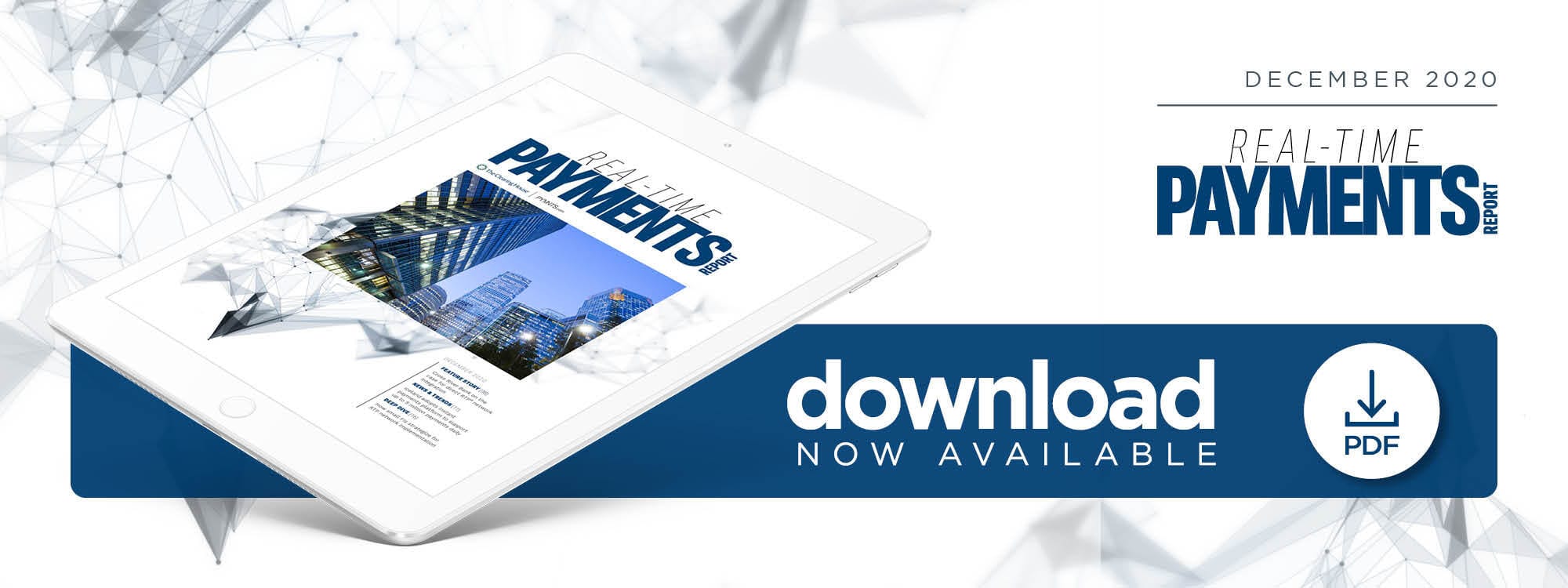Deep Dive: How Small FIs Use Third Parties, Gradual Integrations To Guide New Payment Rail Adoptions

The demand for faster payments is growing as companies look for swift, data-rich ways to transact. One study from 2019 found that 54 percent of 120 financial executives listed real-time payments as one of the most impactful emerging technologies, for example.
Businesses are accustomed to turning to their banks for access to payments services, so financial institutions (FIs) that wish to remain competitive need to be able to meet this need.
FIs appear well-aware of their business customers’ interest in real-time payments, too. A separate survey found that 92 percent of bank and credit union (CU) respondents expected that implementing the RTP network would “benefit” corporate clients, for example.
Recognizing demand is not the same as being able to deliver on it, however, as adopting a near-instant payment rail involves myriad changes. FIs’ existing infrastructures were designed for processing payments in batches and shifting to processing them in real time requires FIs to update core functionalities like payments review capabilities and fraud-fighting strategies as well as support features, like the user interfaces clients see when accessing the new services.
Thirty-seven percent of respondents in another survey reported that they did not have the resources to offer real-time payments, and many small FIs will be carefully weighing the time and monetary costs involved in such a major undertaking against their potential losses to competitors if they wait to adopt. Larger banks and CUs are more likely to have the IT staff and financial resources to more easily manage such a transition, but their smaller counterparts face difficult considerations.
This month’s Deep Dive examines how small banks and CUs are confronting the challenges involved in integrating with faster payment rails and the factors influencing their strategies.
Direct Connection Versus Third-Party Provider
Banks and CUs have options for how they make these upgrades. Some may take the time and effort to build direct connections into a new payment rail system while others may seek to reduce their workloads by selecting third-party service providers to facilitate that connectivity for them.
Banks and CUs with the technical know-how may choose to forge direct connections with payment rail providers to get more control over how they use the service. This kind of direct link provides FIs with improved ability to tailor how they leverage it to suit their particular needs. Building this connection can be costly and requires tech-savvy personnel to handle it, though, which can put it outside the price point of some institutions.
Some FIs looking to reduce their workloads and avoid some costs may instead take a middle route, turning to third-party service providers that can offer the connectivity for them or supply some capabilities while the FIs then handle other aspects of the faster payments experience in-house.
Small FIs looking to access the RTP network appear particularly likely to seek the aid of third parties, with 84 percent of small banks and CUs saying in 2019 that they planned to go this route. This option may be less onerous than handling the application programming interface (API) integrations on their own, but it is still a significant task. Those soliciting third-party partners must still determine how their institutions want to use the faster payment rails and the kinds of experiences they want to offer customers, then articulate these criteria to help guide the third parties.
Phased Implementation
FIs with limited resources are also attempting to avoid overwhelming their teams or overspending by making limited and gradual adoptions. A phased approach can help control costs, with the FIs rolling out faster payment rail access only to certain customer segments at a time or marking a slower path to rolling out access in general.
Small banks are less able to afford widescale implementations of new faster payments technology off the bat, and so they tend to focus first on serving only the use case they thought would be most impactful. They might focus on use cases serving whichever customer base is larger or provides most of their revenue, for example. Ninety-two percent of small FI respondents said they were considering, already offering or in the process of providing real-time payments for consumer retail transactions compared to 80 percent that said the same about commercial use cases.
The same survey of 200 FI respondents also found that smaller FIs had slower timelines to launching any real-time transaction functionalities compared to larger counterparts. FIs with the least resources — such as community banks with less than $1 billion in assets and CUs with less than $100 million in assets — tended to say that they either were still considering implementing access to the RTP network or had ruled against it. This stood in contrast to the majority of the surveyed investment banks and large national and foreign FIs with $1 billion or more in assets, which had already gone live with RTP network functionalities at that time. Regional banks with $100 million to $250 billion in assets were likely to be in the process of adopting the rail or considering doing so.
FIs are recognizing the growing influence of newer, faster payment rails and their business clients’ increasing interest in such services. Smaller banks and CUs are carefully evaluating how they use their innovation budgets to ensure their limited resources have the maximum impact. Small FIs looking to keep up with changing payment trends may find gradually phased-in adoptions and third-party support to be key to letting them modernize affordably.

